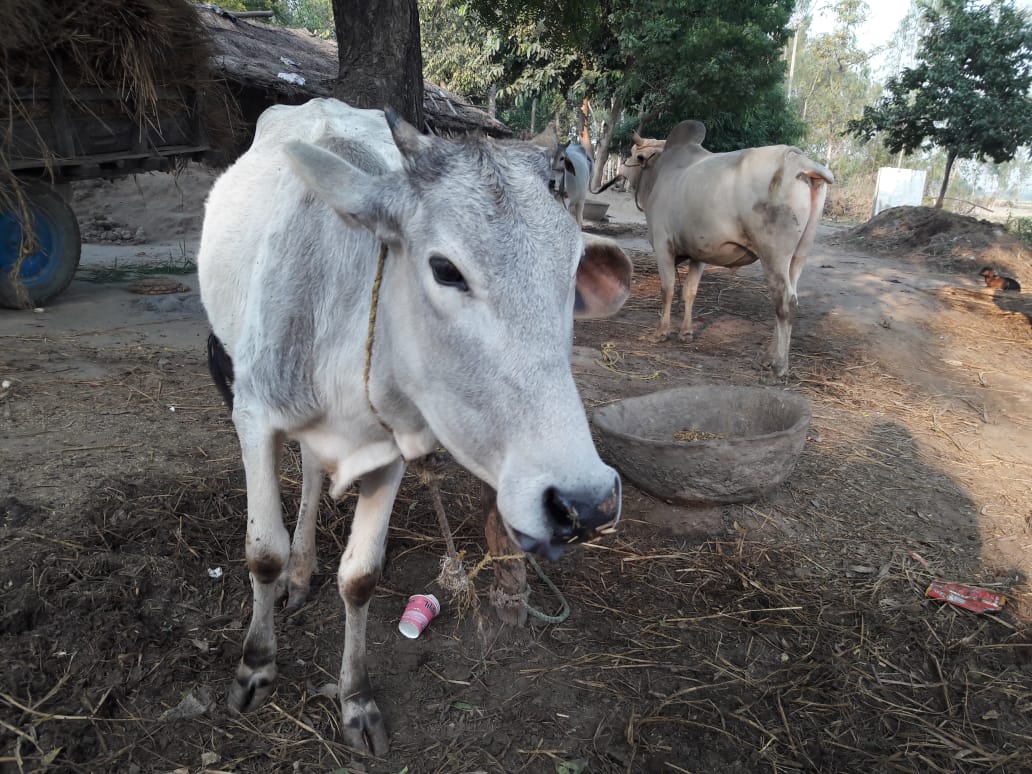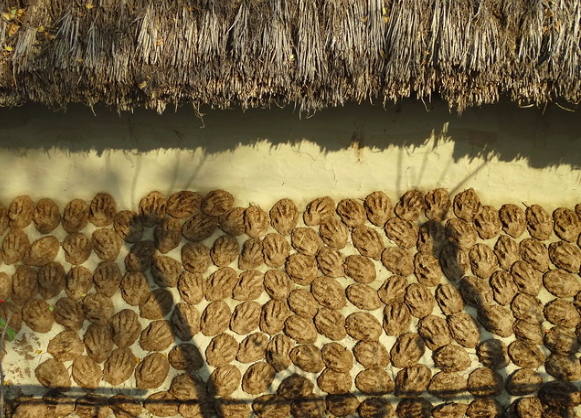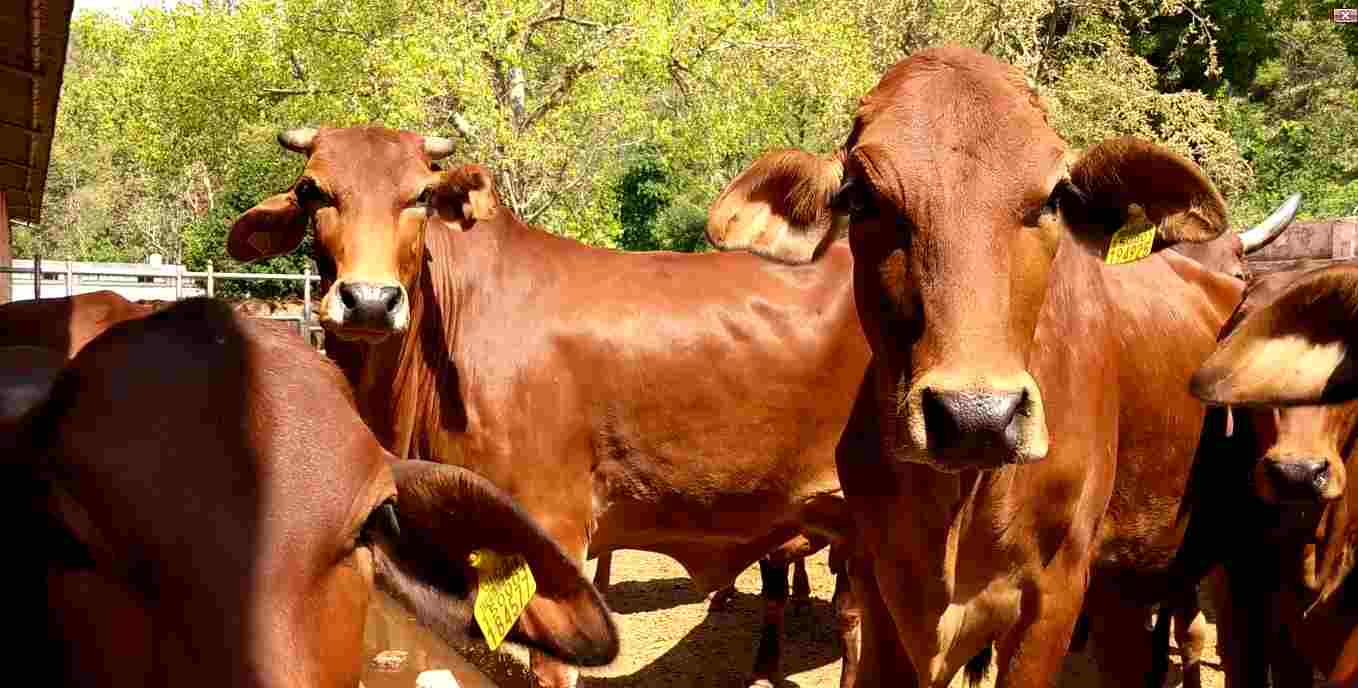Cows are not a problem, but a solution. All we need to do is shift our focus
A cow may, on an average, yield two to three kilos of milk daily, but produces at least seven litres of cow urine and 10 kilos of dung. If the same is utilised, it would solve many problems of the farmers


Lucknow (Uttar Pradesh)
While the farmer in India is busy chasing away stray cows with wooden rods, Pakistan is gearing to run buses with the help of cow dung. A cow may, on an average, yield two to three kilos of milk daily, but produces at least seven litres of cow urine and 10 kilos of dung. If the same is utilised, it would solve many agricultural problems of the farmers.
“The farmer is bothered by cows and calves because he feels they are not useful for him. The farmer judges the usefulness of cows only through its milk. Though a cow yields milk for a limited time, it produces dung and urine up to the last breath. This can be used to make compost, vermi compost, bio-enhancers, etc, which will lead to additional earnings, higher production and lower cost of cultivation,” said Dr Ram Kripal Pathak over the phone.
The former Chief Advisor to the Uttar Pradesh Diversified Agricultural Support Project (DASP), Dr Pathak resides in Mumbai post-retirement and is saddened by the reports in TV and newspapers of uproar over stray cows in Uttar Pradesh. According to Dr Pathak, in 1997, he had initiated the work on making such cows useful which was later not given much attention.
Later, when in 2000, Dr Pathak had become the director of the Central Institute of Subtropical Horticulture (Rahman Kheda, Lucknow), he had kickstarted the research on bio-dynamic (cosmic farming). Bio-dynamic farming relies heavily on cosmic energy, principles of astrology and cow.
“Bio-enhancers (a dozen products such as Jiwamrit, Panchgavya, and biopesticide) can be made from cow dung and cow urine, which reduces the consumption of DAP-urea in cultivation. At a conference in Bangkok in 2003, my research paper based on cow was considered to be the best research paper in the world,” said Dr Ram Kripal Pathak. According to him, over the past few years some farmers in Andhra Pradesh had started working just like Subhash Palekar.”

Farmers face the strays menace in several states of the country including Uttar Pradesh, Madhya Pradesh, Rajasthan and Haryana. According to the animal husbandry department, in Uttar Pradesh alone, there are 11 lakh stray livestock. These are cows and calves which have been abandoned by the farmers as they are of no-use to them. In Uttar Pradesh, the problem has become aggravated post the ban on illegal slaughter houses. The farmers are guarding their fields day and night.
After uproar and heavy protests from the farmers, the Yogi Adityanath government of Uttar Pradesh has ordered construction of Goshalas (cow shelters) at Gram Panchayat level. But the experts say that these problems cannot be overcome unless the cow is made useful for the farmers.
On the usefulness of cow and livestock, Dr Ranvir Singh, chief scientist, Department of Animal Genetics, Indian Veterinary Research Institute (IVRI), Bareilly, said: “Even with the cow that is not giving any rupee milk, up to Rs 20,000 can also be earned by making organic manure (vermi compost etc). DAP, urea, chemical pesticides have damaged the health of our soil and nothing is better than cows, earthworms and microorganisms in order to put it right.”
A desi cow (a stray-like cow or cattle) yields 2 to 3 litres of milk, 7-10 litres of cow urine and 10 kg of dung a day. Bull dung and urine output is slightly higher. On the other hand, it requires only 5-6 kilos of dry fodder to eat. If the farmers start focusing on dung-cow urine instead of milk or if the government starts buying cow urine from the farmers at the panchayat level; if subsidies are extended on dung manure like DAP-urea, all the problems will be solved,” said Dr Putan Singh from the Department of Nutrition, IVRI.
“But farmers do not understand it, nor have the officials of agriculture, horticulture or animal husbandry department trying to convince them of its importance,” Dr Putan added.
Have the officials of the Agriculture Department of India and the government failed to convince the farmers? This can be understood in the words of Dr SK Pathak, former director-Horticulture, Uttar Pradesh Diversified Agricultural Support Project (DASP).
“The biggest hurdle before the authorities is posed by their studies. First, they read for cultivation then do the same in their job till 30-40 years. We have been taught in terms of chemical methods. Lack of field knowledge (ground information) in the authorities on dissemination is a major hurdle. Then, what will they explain to the farmers?”
In support of his claim, he said: “Even today, 20 per cent of urea in India comes from abroad while for potash and phosphorus, we are totally dependent on foreign countries. Over one hectare of the field, 78 per cent of nitrogen hangs in the air and we keep on buying and stoking it in form of urea. If we begin using cow dung-urine, the atmospheric nitrogen would suffice; urea will not be required at all.

The cow may be a national issue for the past few years, but in independent India, matter of improving their condition would put all governments to test. Dr Ranvir Singh, chief scientist, Department of Animal Genetics, IVRI, Bareilly, said: “All stray cows are not of any particular but of mix breed which is generally of good breeds (Sahiwal, Tharparkar, Gir, etc). This is because the offspring testing scheme for genetic improvement towards improvement of Indian cows, was not properly implemented. Had the attention been paid from the beginning, these cows would have been giving 10 litres of milk today — who would have then left them like buffaloes?”
Genetic offspring testing is the process in which at least 100 cows are artificially inseminated from a bull. The heifer so produced gives more milk and is carried forward sequentially. Its good genes are segregated and inserted into the other, thus a good breed of cow or buffalo is readied.
The farmers are being imparted training at Pandit Deendayal Upadhyaya Veterinary College and Cow Research Institute, Mathura in Uttar Pradesh on how stray cows and cattle are useful to the farmers. Vice Chancellor of the College, Prof. KML Pathak said: “With the Green Revolution in the country, the White Revolution (Milk Revolution) had started, but there was a mistake. Indigenous cows were given cross breeding with foreign breeds (Jersey, HF) instead of their promotion. These cows did not prove useful in our climate and the indigenous breed kept deteriorating.”
He added: “But that is the past, we have to pay attention now. We have to talk about the value addition of the cow’s product. Turn dung into manure, process milk into cheese and ghee. I have many farmers who sell desi cow’s ghee for up to Rs 4,000 a kg.”
Prof Pathak laughed while finishing his point and said, “The first person to teach the lesson of value addition was Lord Krishna. He told the gokul dwellers not to sell milk but go to Mathura and sell butter and buttermilk there. We should follow the same path.”
Upon the question of cow utility in India, Dr Mahesh Chandra, Joint Director, Extension Education, IVRI-KVK (Bareilly), said: “Cow’s milk, cow dung is all useful. There is a demand for low fat milk abroad. This milk is useful for heart patients. It is good that now even in India, conscious people are buying cow’s milk and its products at costly prices on the basis of low lat and utility.”

Most of the milk in India goes to cooperative dairies. Private dairies also run on similar lines and buy milk on the basis of fat. Based upon fat content, the price of buffalo milk is higher, as the same milk is used to make sweets, mawa, etc. Cow’s milk sells at a lower price due to low fat content.
There is another major reason behind abandoning the cows and calves, which has been constantly overlooked in India. According to the experts, these stray animals are suffering from a severe disease that has reduced their productivity.
As per Dr Shoorvir Singh, former scientist of the Department of Animal Health at Central Goat Research Institute, Mathura and currently, head of bio-technology department at Galgotia University, most of the stray animals are suffering from the intestinal TB.
He explained: “At least 36 per cent of the stray cattle are suffering from intestinal TB. This disease reduces the milk yielding ability of animals. Gradually, they even become infertile after producing only 2-3 offspring after which the farmer abandons them.”
He added: “In 2014, I had developed a vaccine to control this disease, which although was accepted by the government of India, but not propagated on a large scale. This vaccine costing merely Rs 15-20 can make the stray cows useful.”
The sickness of the cattle is not only rendering them useless but is also detrimental to the health of common people. Dr Shoorvir added: “These viruses come to humans through milk powder, ice cream, etc., and can then cause 20-21 diseases like diabetes, colitis and arthritis. It is also very important for human beings to cure this disease.”
He added: “I had read in the English newspaper that it could cost Rs 11, 000 crore to deal with the cow problem in Uttar Pradesh. If only a thusand crore rupees be spent upon my project, the problem of strays in the entire country can be addressed.”
On the utility of the cow, Dr Mahesh Chandra said: “Look, the times are changing. People have become health conscious. Earlier, there was no demand for breeds like Sahiwal and Gir, but now their farm houses are being created. A lot of cows of Gir breed in Gujarat and Sahiwal breed in Punjab are being sold. But these are only the cows of good breeds; the rest of the breeds will also have to be improved besides working on their by-products.”
In the last few years, as there has been an uproar regarding the cow issue, the discussion on the usefulness of the cow has also intensified. The National Gokush Mission and the Ayush Mission in the field of medicine were initiated. People’s awareness about Ayurvedic medicines has increased.
Sushil Awasthi Aditya, residing in Burari, Delhi, has been selling cow’s milk and its products for the past few years. He explained: “I don’t understand why cow is so overlooked in India. There are seven patents upon cow urine registered in the world, including four in the US and three in India. America is making cancer drugs from cow urine while we are chasing cows on the streets. Even if it doesn’t yield milk, the cow is useful.”
When asked how, he cites an example of certain goshalas in Rajasthan and Haryana, where a minimum of 10 litres of cow urine is sold, Nandi cow urine is Rs 15 per litre, while its extracts fetches Rs 150 a litre.
Recently, there was a research undertaken in the United States that has established cow’s benefits beyond our expectations. US researchers believe that cow may be helpful in making vaccines against HIV. They believe that these cattle constantly generate such antibodies that can not only treat HIV but can also effectively eliminate it. They are of the view that the immunity in cows is far superior and more effective because of their complex and bacteria containing digestive systems. The US National Institute of Health has considered this information very effective.
Note: The stories were originally published in February 2019.

